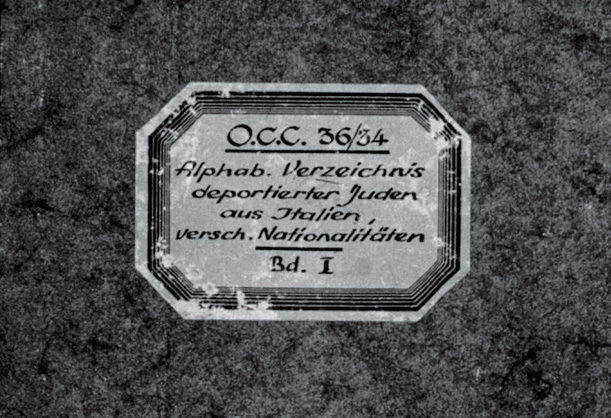Finally, a third, numerically smaller group, comprising 40,517 people, according to currently available information, comprised those who were deported from Italy to the actual Nazi concentration camp system, run by the SS.
It is appropriate to attribute the name of “deportees” solely to this group, thus restricting the meaning of the term “deportation” to that of “deportation to Nazi concentration and extermination camps”.
This allows us to put every piece of the extremely complex overall puzzle – which brings together the experiences of the Italian men and women forcibly transferred to Germany following the armistice – in its right place.
The category “deportation”, however, must be broken down further, since the Nazi concentration camp system had become, from the second half of 1941 onwards, the sum of two distinct organizations governed in different ways.
The system of Konzentrationslager (abbreviated KL) began in 1933 with Dachau, and then developed in the following years (frenetically from 1939 onwards) with the aim of putting out of action and eliminating political opponents (from 1933 onwards), non-conformists and potential social opponents (from 1936 onwards), and people able to organize resistance in the territories occupied by the Wehrmacht (from 1939 onwards). It was supplemented by the system of extermination camps (Vernichtungslager, abbreviated VL), conceived as facilities with the job of physically eliminating Europe’s Jews, en masse and rapidly. The VL were conceived on the model of the KL; although administratively linked to them, they differed in purpose and operation. There were eight of them in total (a further extermination camp, Mogilëv, east of Minsk, in occupied Belarus, was planned but not built). One of the VL was located in invaded Serbia, on the outskirts of Belgrade (Semlin-Sajmište), a second in Belarus on the outskirts of Minsk (Malý Trostinec), and as many as six in annexed Polish territory. Of the Polish VL, four (Chełmno, Bełzec, Sobibór, Treblinka), operated until 1943, when they were closed (Chełmno was reopened briefly in the summer of 1944 for the purpose of killing the Jews still living in the Lodz Ghetto, and the other three were dismantled immediately after closure). Of the remaining two, Majdanek (located inside the homonymous KL near Lublin) operated only in the summer of 1942, while Auschwitz II (i.e. Birkenau, which was a section of the gigantic Auschwitz KL) instead continued its extermination activity until the end of January 1945, when the camp was liberated by Soviet troops.
Among the Italian deportees, however, it is necessary to distinguish between the destinations of the Jews. One group comprised a total of 8,709, of which 6,889 were deported from Italy, and 1,820 from the Dodecanese, at the time Italian; only 753 survived. Some of those in this group ended up victims of the “final solution”: the majority were sent to Auschwitz II Birkenau (where in previous months the genocide had been centralized), while a much smaller number ended up in KL (Bergen Belsen, Ravensbrück, Buchenwald, Flossenbürg). The other group, numbering 23,826, and classified by the occupiers and their Republican Fascist allies as political or social opponents, were sent to KL (Dachau, Mauthausen, Buchenwald, Ravensbrück, Flossenbürg, etc.); approximately 50% would return.
A further 7,982 deportees, originally also destined to end up in the KL beyond the Brenner, however remained in the transit camp Durchgangslager, abbreviated Dulag, of Bolzano Gries, as it was not possible to send them beyond the Brenner. This made it possible for many more of them to survive than their comrades who instead reached their foreseen destinations.
However, the distinction between forced workers, IMI, and deportees to KL/VL is to some extent theoretical: while we should take care not to confuse widely differing events and experiences, we should also bear in mind, on the one hand, that the boundary between one category and another might not be, in particular cases, that clear-cut. For example, there were punishment camps for military internees unwilling to collaborate in any way, and punishment camps for unruly workers that in many ways resembled KL. On the other hand, it should be remembered that events of various kinds – ranging from personal behaviour judged hostile by the jailers, to decisions implemented by the Nazi authorities for reasons completely unrelated to camp life – could cause a forced labourer or military internee to end up in a KL.
